THE
An introduction to the Varanids of the Pilbara
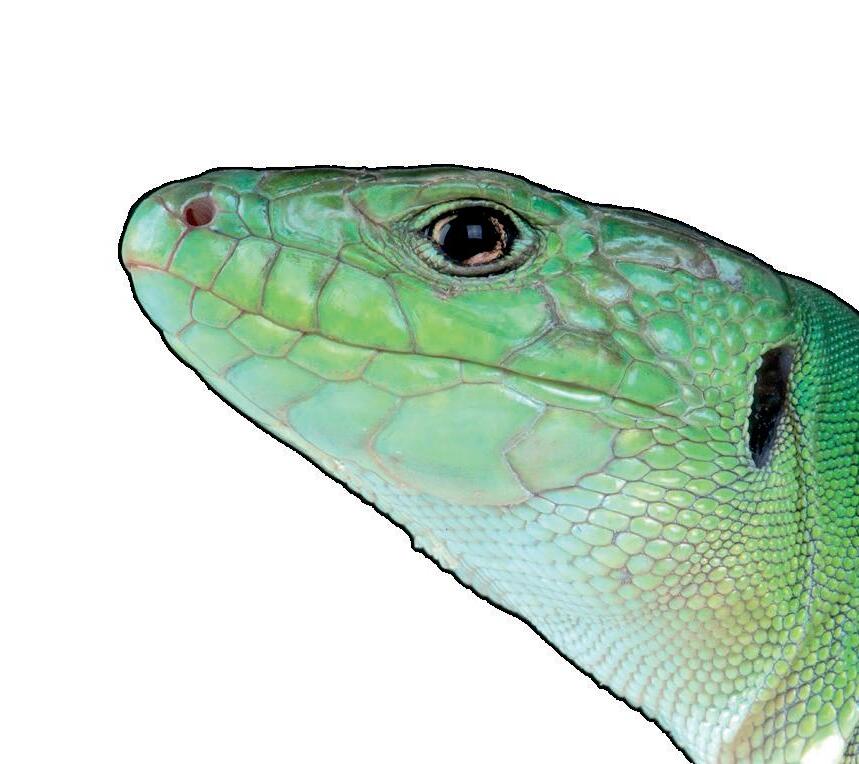


ALL EYES ON ME

www.exoticskeeper.com • may 2023 • £3.99 MONITORING WESTERN AUSTRALIA
NEWS • SCOLOPENDRA DEHANNI • REHOME ZONE • WHAT IS A SILKWORM? • POND MAINTENANCE
Tarron Boon explores the keeping and breeding of Moroccan eyed lizards (Timon tangitanus) in captivity.
BEHIND THE LENS
César Barrio-Amorós explains his evolution as a photographer, with a focus on herping photography.
AQUATIC FROGS OF AFRICA
The dwarf clawed frog has long been a popular addition to home aquaria, but are people keeping and breeding them correctly?

CONTACT US
EDITORIAL ENQUIRIES
hello@exoticskeeper.com
SYNDICATION & PERMISSIONS thomas@exoticskeeper.com
ADVERTISING
advertising@exoticskeeper.com

About us
MAGAZINE PUBLISHED BY Peregrine Livefoods Ltd Rolls Farm Barns
Hastingwood Road
Essex
CM5 0EN
Print ISSN: 2634-4701
Digital ISSN: 2634-4688
EDITORIAL:
Thomas Marriott

DESIGN:
Scott Giarnese
Amy Mather
Subscriptions
Follow us

This month’s magazine marks the start of a major push towards increasing the reach of Exotics Keeper and hopefully getting closer to our ambition of improving welfare standards for animals in captivity, across the world. Not only has our Member’s Club opened new opportunities for international readers, but we are embarking on a huge survey initiative. This survey, combined with data gathered by the FBH, should give policymakers some insight into just how many reptiles and amphibians are being kept in the UK. This month, I have been reaching out to several organisations to gather their perspectives on recent legislative advancements (or proposed advancements) in the UK and to discuss what constitutes a “traditional companion animal”. At the time of writing, we are contemplating featuring this in next month’s magazine, or it may be shared on our social media. Either way, please check it out!
In other news, I must thank the team at the British Herpetological Society and Advancing Herpetological Husbandry for their hospitality at yet another fantastic annual conference. The event was a major success and I appreciate the many conversations I had with subscribers, advertisers and fellow reptile enthusiasts. As it stands, we hope to be at many more events throughout the year and you can keep updated on our calendar via social media.
This issue covers a range of topics designed to appeal to a broad
audience. Paul Irven gives us insight into keeping and breeding a species that used to be incredibly popular but is far rarer today – the African dwarf clawed frog. Worldrenowned herpetologist, César Barrio-Amorós talks us through his life as a photographer and the kit that he uses. I also caught up with Chris Applin, following our Varanid feature in March, to discuss the incredible Varanus diversity of Western Australia. Finally, UK keeper and breeder, Tarron Boon gives us a progressive look into the care and keeping of Timon tangitanus, the Moroccan-eyed lizard. Our “Rehome Zone” feature has also proven to be a hit, so I spoke to Monte at the NCRW to see whether we could help give some of their animals a second chance at a loving home.
As always, thank you for supporting the EK project.
Thomas
Marriott
Every
Front cover: Pilbara rock monitor (Varanus pilbarensi)
Right: Pygmy mulga monitor (Varanus gilleni)

. . . . . . . . . . . . . . . . . . . . . . . . .
effort is made to ensure the material published in EK Magazine is reliable and accurate. However, the publisher can accept no responsibility for the claims made by advertisers, manufacturers or contributors. Readers are advised to check any claims themselves before acting on this advice. Copyright belongs to the publishers and no part of the magazine can be reproduced without written permission.
‘Best Aquarium Fish Food’









As voted by readers of Practical Fishkeeping magazine

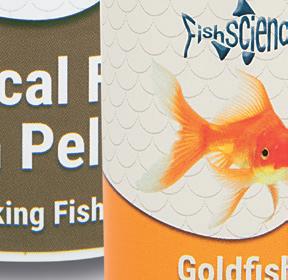


Aquarium Fish Foods with Insect Meal

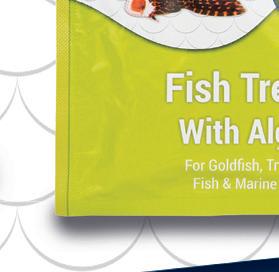

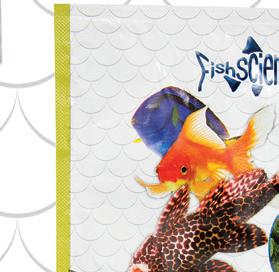

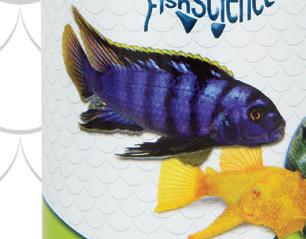





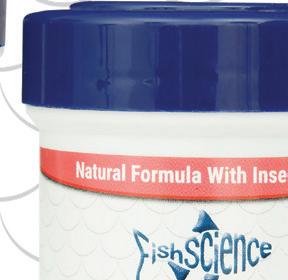
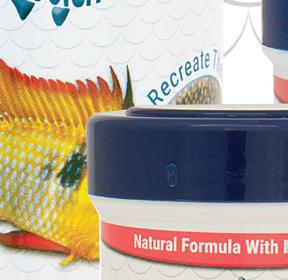


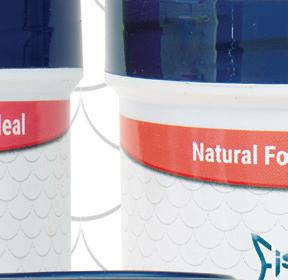




Uses cultured insect meal to recreate the natural insect based diet that most fish eat in the wild.
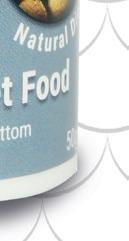







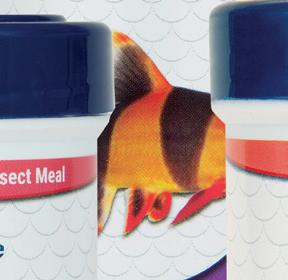

Easily digested and processed by the fish resulting in less waste.








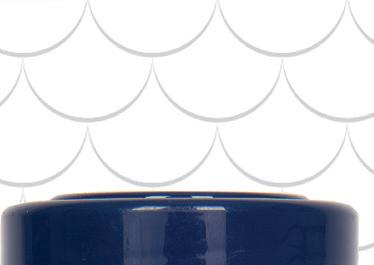

Environmentally friendly and sustainable.

www.fishscience.co.uk
02 06 14
02 EXOTICS NEWS
The latest from the world of exotic pet keeping.
06 THE AQUATIC FROGS OF AFRICA
Keeping and breeding the African dwarf clawed frog.
13 SPECIES SPOTLIGHT Focus on the wonderful world of exotic pets. This month it’s the Giant Vietnamese centipede (Scolopendra dehaani).
22 30
14 MONITORING WESTERN AUSTRALIA
An introduction to the Varanids of the Pilbara.


22ALL EYES ON ME
The keeping and breeding of Moroccan eyed lizards in captivity.




30
BEHIND THE LENS
Photographing amphibians and reptiles in the wild.
39
39 KEEPER BASICS: Summer Pond Maintenance.
45 FASCINATING FACTS Did you know...?
46 REHOME ZONE
Can you help these exotic pets find a new home?
EXOTICS NEWS

The latest from the world of exotic animals

Five new species of tree-dwelling snake, belonging to the genera Sibon and Dipsas, have been found in the jungles of Ecuador, Colombia and Panama and are now at risk from mining activity across the regions.
New frog species named after J.R.R. Tolkein

A new species of stream frog has been named after The Hobbit and Lord of the Rings author J.R.R. Tolkein. The frog, Hyloscirtus tolkieni, was discovered in the Ecuadorian Andes by researchers Juan C. Sánchez-Nivicela, José M. Falcón-Reibán and Diego F. Cisneros-Heredia and named after the fantasy author due to its other-worldly colouring. It lives in the streams of the Rio Negro-Sopladora National Park in south east Ecuador which lies at 3190 metres above sea level. The species’ measures 65mm in length and its tadpoles develop among the rocks of fast-moving rivers. Only one of the species has been found and researchers will now assess its conservation status and risk of extinction.

Paradise Wildlife Park to open two new “world class” habitats
Paradise Wildlife Park in Broxbourne, Hertfordshire is due to open two new enclosures after a two-year delay. With the opening originally planned for 2021, Jaguar Jungle and Sun
Bear Heights will now be open to the public from 1st April. After Covid-19 restrictions forced the park to postpone the opening, it has now described the delay as a “blessing in disguise” that allowed them to create an even better experience with the extra time.
Aaron Whitnall, one of three brothers who run the zoo, said: “Even though it’s a bit behind, the delay has had its benefits. We’ve been able to take a bit more time and we now think we’ve got world class habitats.
“It was a blessing in disguise- we’ve now been able to create something amazing that we think will blow people away.”
Jaguar Jungle will be the only enclosure in the UK where people can see the big cats swim, while Sun Bear Heights will be the home to endangered sun bears, binturong and two Asian small-clawed otters.
New species of South American tree snakes under threat from illegal mining
The species were described by biologists Alejandro Artega and Abel Batista, with three being named by actor and founder of Re:wild, Leonardo DiCaprio (Sibon irmelindicaprioae) and businessman and philanthropist Brian Sheth (Sibon marleyae and Dipsas welborni) in an effort to raise awareness of the risk to the new-found species.
The snakes are under threat from increasing copper and gold mining in the regions, where illegal openpit operations reached critical levels during the Covid-19 pandemic. The neotropical snakes are arboreal and favour dense vegetation, the very habitats that are being rapidly destroyed by the spread of the mines. Their prey largely consists of snails and slugs which are in sharp decline due to the pollution of water bodies caused by nearby mining. With their diet rapidly disappearing and their habitats being reduced to rubble, the new species are at immediate risk of decimation. With unemployment levels high and the mining an illegal but lucrative practice, there is a major incentive for miners to expand their operations, and little motivation to reduce their impact on the surrounding habitats.
Fortunately, non-governmental organisations Khami, Nature and Culture International and Adopta Bosque in Ecuador and Panama have initiated the process of protecting the snakes’ habitats by requesting urgent land protection, the only route to avoid extinction for the new species.
2 MAY 2023 Exotics News
Make sure you catch our exotic insurance.
©Juan Carlos Sánchez-Nivicela / Archive Museo de Zoología, Universidad San Francisco de Quito
National Aquarium returns rehabilitated sea turtles to the ocean
The National Aquarium in Baltimore has successfully returned 25 juvenile sea turtles to their ocean home after rehabilitation. The 13 Kemp’s ridley and 12 green sea turtles were released in St. Augustine, Florida, after receiving treatment for cold stunning by aquarium staff since the end of 2022.

After becoming stranded off the coast of Massachusetts, they arrived at the aquarium in November, displaying ailments including pneumonia, lesions to the eyes, shells and skin, missing limbs, dehydration and blood and gastrointestinal infections. The smallest of the turtles, Dewey, weighed only 2.2lbs on arrival at the aquarium but, after making a remarkable recovery, was released with the rest of the group after gaining a further 2lbs.
This year, the third-highest number of cold stun cases were recorded, with over 850 sea turtles becoming stranded in the Greater Atlantic Region from Maine to Virginia.
Southern white rhino calf born at Colchester Zoo
In an exciting development in a breeding programme at Colchester Zoo, a Southern white rhino calf has been born.
The programme aims to conserve the species which, as a result of poaching and the ivory trade, has been listed as ‘Near Threatened’ on the IUCN Red List. With
only 16-18,000 wild Southern white rhinos remaining worldwide, the new arrival is a positive step towards protecting the dwindling species.
The King and Queen Consort recently visited the Essex zoo to reveal the name of the calf, Dara, which means beautiful in Swahili, also marking the zoo’s 60th anniversary.
Dara is the seventh Southern white rhino calf to be born at the zoo and the second for mother Astrid, giving further momentum to the vital breeding programme.
Six new species of pygmy chameleon described in threatened Tanzanian habitat
A team of local and international scientists have described six new species of pygmy chameleon in Tanzania’s Eastern Arc Mountains. The 900-kilometre mountain range is incredibly biodiverse and is home to over half of the now 26 described species of pygmy chameleon.
The mountains’ forests are now under threat after large areas have been cleared by farmers for crops and livestock. Most of the six newly described species are endemic to the Eastern Arc Mountains and are at risk of extinction due to this loss of habitat.
Michele

Menegon, an ecologist and conservationist, was part of the team of researchers who described the six new species. He has seen first-hand the biodiversity of the forest and the impact of deforestation in recent years. He said:
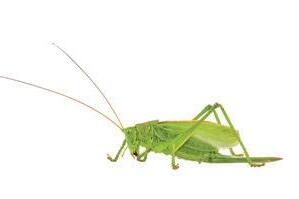
3 MAY 2023 Exotics News
Get a quote at britishpetinsurance.co.uk or call us on 01444 708840
©ZSL Whipsnade Zoo
©Philip Smith, National Aquarium
“In 3,500 square kilometres of closed-canopy forest in the Eastern Arc Mountains, there is roughly the same number of amphibian species as the entire Democratic Republic of Congo. It’s unbelievable. We have lost some of [the chameleons] already, in the forest that’s no longer there.”
Menegon is co-director of PAMS Foundation, a conservation non-governmental organisation that has now started working with farmers in the region to replant 300,000 native trees on part of the mountains in efforts to restore part of the lost habitats, offering some hope that the biodiversity of the forest can be protected.
Endangered southern corroboree frogs released in Kosciuszko National Park after fires

A second batch of southern corroboree frogs have been released in Kosciuszko National Park, New South
Wales (NSW) in attempts to increase populations after the Black Summer bushfires of 2019 and 2020. One hundred of the captive-bred frogs were released, following a similar release in March last year as part of the vital conservation programme.
The NSW Department of Planning and Environment’s Senior Threatened Species Officer, Dave Hunter, has highlighted the importance of the programme, saying without it the frogs would become extinct. With no individuals of the species known to exist outside the programme, the releases are the only chance to reintroduce them to the wild since a fatal disease caused by chytrid fungus, compounded with climate change, saw the frogs listed as critically endangered.
With last year’s batch reportedly thriving in the park, the outlook for the species is optimistic.
Written by Isabelle Thom.
ON THE WEB
Websites | Social media | Published research
Each month we highlight a favourite website or social media page
THIS MONTH IT’S: CRWILD
CRWild, short for Costa Rica Wild, is a renowned Costa Rican company established in 2016 with over 22 years of extensive experience in the Neotropics. Their primary objective is to create unforgettable nature experiences by exploring and capturing the wildest moments of amphibians, reptiles, and other wildlife. We operate not only in Costa Rica but also in Panama, Guatemala, Mexico, Ecuador, and Colombia.
www.crwild.com
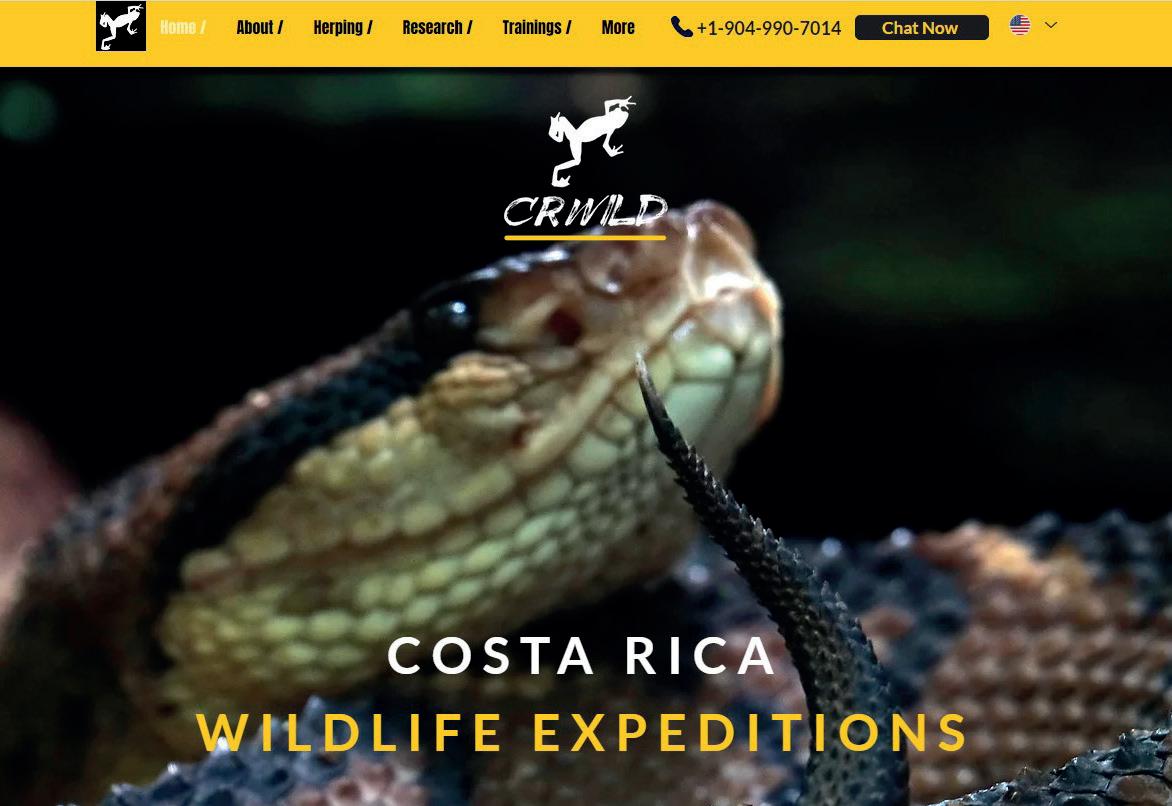
4 MAY 2023
Exotics News
©NSW Department of Planning and Environment

THE AQUATIC FROGS OF AFRICA
Keeping and breeding the African dwarf clawed frog.
 By Paul Irven
By Paul Irven
6

The dwarf clawed frog has long been a popular addition to home aquaria, often being housed with fish in a community tank. However, these diminutive aquatic frogs can be more successfully kept and bred, in their own dedicated aquarium. This article will discuss my personal experiences of keeping and breeding this interesting amphibian.
Classification
The African dwarf clawed frog, from the genus Hymenochirus, is a member of the Family Pipidae, and is also related to the much larger Xenopus frogs. There are four recognised species within the genus Hymenochirus; H. boettgeri, H. boulengeri, H. curtipes and H. feae. These species are found from the forests of Equatorial Africa to the tropical rainforests of Nigeria and Cameroon in the north, and south through Gabon to the Congo River basin in the east.
Known as the Zaire or Congo dwarf clawed frog, Hymenochirus boettgeri is found in Nigeria, Zaire
and the Cameroons, whilst H. curtipes is found in the lower Congo basin and is known as the Western dwarf clawed frog. The Gabon dwarf clawed frog H. feae is essentially found in the Gabon and Hymenochirus boulengeri is known as the Eastern dwarf clawed frog. All species are very similar visually, so individual identification is not easy, but the two commonest species in captivity have always been H. curtipes the “Western” and H. boettgeri the “Congo”.
In the wild, they inhabit shallow, slow-moving rivers, creeks and still ponds during the dry season and move to flooded forest areas during the rainy season. Their colouration
8 MAY 2023
The Aquatic Frogs of Africa
ranges from a dull green to a light brown or grey with dark spots. This provides them with the ideal camouflage against the bottom of their watery environment. Dwarf clawed frogs measure between 1 to 1.5 inches in length and they have three claws on each back foot, a pointed snout and a narrow body and can live up to five years.

The commercial imports of African dwarf clawed frogs into the UK for the aquarium trade began in 1975 and continued throughout the 1980s, as they proved very popular. Since then, imports have tailed off dramatically. Today, they are less commonly available in aquatic outlets and fewer are kept in private aquaria as a result.
I first started keeping African dwarf clawed frogs in 1993 and I first bred them in 1994 but due to work commitments, they left my collection in 1995. I always believed mine to be the “western” variety, going on details of where they were imported from in 1993. Then, some 25 years later in 2020, the species returned to my care once again when I was offered four mature specimens that were being kept in a large mixed-species community fish tank.
Housing
These frogs can be kept as part of a community aquarium. However, I chose to keep my first young specimens in their own “species-tank” and for various reasons, I would recommend this method to anyone thinking of keeping them.
The first frogs I obtained in 1993 were a group of five individuals purchased from different aquarium outlets to increase the chances of them being unrelated. All five were mixed in a neutral tank environment. This allowed them to “pair off” naturally, as sexing these frogs is very difficult, especially when very young. So, by letting them choose their partner, it helps to ensure strong opposing sex pairings by natural selection. For many social species, I have always believed that allowing for natural pair selection facilitates stronger and better pair bonds to be established. In many cases, this will directly lead to more productive breeding as a result.
There are no specific aquarium size requirements for this species, but I would suggest that a small-to-mediumsized aquarium is most suitable (no more than about 2ft in length). They are a small species and are quite timid by nature. In my experience, they seem to appear more

9 MAY 2023 The Aquatic Frogs of Africa
Black velvet stick insect (Peruphasma schultei)
About the author: Paul Irven has worked in both public and private zoos for over 30 years and has also kept and bred a wide variety of species at home. Since 1987 he has combined his life-long passion for animals with his love of writing about them in numerous articles, including producing his own zoo magazine since 1996.
secure in a smaller environment. This also allows the keeper to control the water parameters better. I have used both plastic and glass tanks for this species, although glass may provide a greater level of temperature control.
Good filtration and water aeration are crucial but this must not be too vigorous. The water movement needs to be subtle, remembering that they are not strong swimmers. In the wild, they inhabit still pools and very gentle streams. A planted aquarium is always best and plenty of hiding places are another important aspect of their captive care. They spend much of the daylight hours resting or hiding, so the provision of small “caves” built from carefully arranged rocks, stones or slate is useful. Care should be taken because these frogs can get their thin legs easily trapped by larger substrate material, hence why using a small gravel substrate is best. I would certainly not recommend using sand, because of their method of eating, which is to launch themselves in a somewhat random fashion at their food and so the potential for ingesting sand particles would be high.
Good water quality is very important, I have always used a commercial water treatment such as “Aquasafe” which is readily obtained in most aquarium outlets. This neutralises any potential chemicals present in the water including chlorine. Water that is soft, but mildly acidic, is preferred. The depth of the water is important and should only be around 12 inches high, remembering that these frogs need to constantly return to the surface for air. The ideal water temperature should be around 24°C but can range up to 27°C as a maximum temperature. That said, some people suggest that low temperatures of 15°C can stimulate spawning behaviour, although I did not try this and personally feel that is too cold. A good aquarium thermometer with a thermostat incorporated should
control the temperature, but the position of the tank is also important as excessive sunlight can be detrimental. Standard overhead tubular aquarium lighting is sufficient, but again, this must not be too bright or too hot. Therefore, LED lights may not be suitable for these frogs.
Feeding
African dwarf clawed frogs will readily eat all manner of small aquatic live-food such as daphnia, tubifex, blood worm and brine shrimps. Although they can be accustomed to eating the freeze-dried equivalents, in my experience, they much prefer live food and are much healthier on it too.

If the frogs have never eaten freeze-dried food before they will probably refuse it and this can be problematic if supplies of live food are not always reliable. I found this to be the case myself when my supplier suddenly let me down and I couldn’t find another source of live food quickly enough. I would say this is one of the biggest issues in keeping the species long-term.
These frogs are said to be nocturnal, but I found them to be fairly crepuscular as they become accustomed to your feeding pattern or routine. They “hang” in the water eagerly waiting for food, and I always fed mine every evening. Feeding times spark greater activity and they can become quite aggressive towards one another whilst feeding. If you try to feed each frog in its own area or corner of the tank it will reduce competition to a degree, which can be quite rough, as the frogs lunge for their food they will tussle and bite each other`s legs in the squabble. They are territorial over food and clumsy. They will not come up to the top to feed but wait until it drops to the bottom of the tank. Some people feed them twice a day,
10 MAY 2023
© Paul Irven
morning and evening, but I would suggest that if you do that use only small amounts at each feed. Over-feeding can be a problem, as they are ravenous feeders, which can cause obesity, which will be detrimental to any breeding attempts. Their body shape is naturally curved downwards which facilitates their hunting, stalking and searching method of feeding amongst the substrate.
Interestingly, when I obtained my second, older, batch of frogs more recently (that had been kept in a large mixed community of fish, alongside a large pair of musk turtles), they were used to swimming up for their food. This is probably because of the competition for food from the fish and turtles and I wondered how they managed to get enough food at all living in this environment. Having kept the species in their own tank in the past, and bearing in mind these frogs were used to the fish, I decided to try this older group in a small mixed community fish tank. But I also created a feeding device to make sure they got enough food and to help prevent the fish from eating it before the frogs did. This device was simply a length of clear aquarium air-line pipe gently cable-tied to an aquarium glass scraper rod, with a syringe at one end so that I could siphon up the food and direct it right in front of the frogs. This worked very well, but it wasn’t long before the fish soon discovered this novel feeding device for themselves too.
It is interesting to note that these frogs occasionally shed a thin layer of skin, presumably as they grow, and I have seen them consume this as it is pulled from their bodies. If you do keep these frogs in a community fish tank, another thing to consider is that any fish species that have a sucker mouth, such as algae-eating species, will try to latch onto these frogs, either by mistake or on purpose, but it is clear that the frogs do not appreciate this extra attention.
Breeding
As the dwarf clawed frogs become mature, the males develop a prominent post-axillary gland behind the forelegs. In general, the females are about 40% larger than the males and as they start producing eggs their body shape takes on a pear-shaped appearance, compared to the male's narrow body shape. The female's genital region and ovipositor will also become more pronounced.
These frogs are not particularly easy to breed. Whilst it is not too difficult to induce spawning, it can be hard to care for the eggs and tadpoles.

There are several key factors to follow to improve the chances of successful reproduction in this species:
• Obtain several unrelated frogs to allow for natural pair selection.
• Feed them live food, brine shrimp is said to help bring them into breeding condition.
• The water level must be at the right height and of the right temperature.
• The water quality and aeration must be good.
• Control daylight hours.
Once the conditions are right, gradually raise the water temperature to between 23°C – 26°C, but no higher. Then, simultaneously reduce the water level from 12 inches to between 10 – 8 inches in height, but no lower than 8 inches. I believe these two factors are crucial in triggering spawning. It may help to attempt this in the summer months (in the UK).
Courtship will begin with the males calling, usually in the evening and at night, this can be quite loud and persistent. If the females respond this only intensifies the males
11 MAY 2023
© Paul Irven
calling and if you have several frogs in the tank, each frog calling spurs the others on, I believe this competition for mates also encourages more calling but also mating behaviour. The males will relentlessly pursue their chosen mate. If she is responsive he will attempt to clasp onto the female with his forelegs, holding her around the waist, just above the hind legs. This is known as amplexus. A pair in amplexus can remain in this state for many hours. The longer they remain clasped together, the better the chances of successful spawning. Amplexus is a prelude to proper mating/spawning, and it may occur several times a day in a bonded pair. Sometimes the amplexus is quite strong as pairs in this state will often remain together whilst swimming up to take in air from the surface, and despite their primitive lungs, their air capacity seems quite good. Spawning normally occurs either late in the afternoon, early evening or, most commonly, overnight.
I would not attempt to move or disturb the frogs when in amplexus. Leaving them to spawn in their tank, moving the eggs is far easier than trying to move the frogs to an eggrearing tank. The frogs can get easily stressed and they might separate from amplexus if moved.

When mating, the eggs and sperm are released at the same time to maximise fertilisation. Once the frogs spawn the eggs should be removed as soon as possible to another tank set up with the correct water parameters before spawning. If the eggs are left with the adults, they will likely eat or damage the eggs. The eggs are very small measuring about 0. 9mm in diameter and are extremely
sticky. If fertile, each egg should have two clearly defined “poles” – a dark-coloured “animal-pole” and a slightly lighter-coloured “vegetative-pole”. If there is one at each end, the eggs will look healthy. With a good pairing you can expect about 70% of the eggs produced to be fertile, this is a good ratio. Infertile eggs will be apparent in comparison, they do not have the “poles” at each end of the egg cell and are usually just very small and dark-coloured, they will fall to the bottom of the tank and quickly start to disintegrate. Any infertile or damaged eggs should be removed as soon as possible to prevent the water from fouling. The frogs' eggs are light-sensitive and strong light can destroy the eggs, equally the ideal water temperature for embryo development is between 20-22°C and it is important not to let the water become stagnant. Some light water movement and aeration are necessary for the rearing tank.
Within only 24 hours the fertile eggs can be seen to internally divide, after two days the embryos will start to move with tiny jerky movements. These movements gradually become stronger until they break free from the egg. Once out the tadpoles do not require any food for the first 24 hours as the embryos will utilise their yolk sac for nourishment at this early stage, but from the second day onwards they will require live baby daphnia and brine shrimps eggs to feed on. They may not start feeding immediately but should feed by the third or fourth day at the latest. Care must be taken not to overfeed the tadpoles at this stage as it can lead to dead tadpoles and foul the water. At about six days old, the tadpoles will be free swimming.
12 MAY 2023
The Aquatic Frogs of Africa
Platinum White Zaire Dwarf Clawed Frog (Hymenochirus boettgeri)
SPECIES SPOTLIGHT
The wonderful world of exotic animals
Giant Vietnamese centipede (Scolopendra dehaani)

Scolopendra is a genus of centipede notorious for its aggressive nature and toxic venom. Found across the world, many species within this genus have become sought-after in captivity due to their impressive size and challenging reputation. S. dehaani is no exception. Growing up to 30cm this invert is considered one of the largest centipedes on the planet. Common names for this species include the Vietnam giant centipede and the Thai giant centipede. Unsurprisingly, this species inhabits humid tropical forests in Southeast Asia. Revision of Scolopendra classification in this part of the world is necessary to truly determine subspecies of S. subspinipes, but currently S. dehaani can be distinguished morphologically as its own species by the lack of spines on the underside of its legs.
There are many benefits to keeping inverts, particularly fast-moving centipedes in a rub/tub set up as opposed to a front-opening terrarium. By providing a smooth surface taller than the length of the centipede’s body,
the animal will struggle to escape when doing enclosure maintenance. By providing a deep layer of moist soilbased substrate topped with a dry layer, the centipede will actively burrow as and when it needs to. Scolopendrids are particularly susceptible to fungus infections if kept in wet conditions for too long. Initial signs of this appear in the form of black spots. Scolopendra dehaani should be kept between 75% and 85% humidity and at a temperature between 24°C and 28C°.
Cork bark and artificial plants will help the centipede feel secure, but always exercise caution when moving these around. Paintbrushes should be used when coaxing centipedes out of the substrate. The bristles are less disruptive than tweezers and gives the animal something to bite without causing too much damage to the animal. First-hand reports suggest that S. dehaani can inflict considerable pain often resulting in a trip to the hospital and always ruining the day of the unsuspecting keeper.
Species Spotlight
MONITORING WESTERN AUSTRALIA

An introduction to the Varanids of the Pilbara.
 Pilbara rock monitor (V. pilbarensis)
Pilbara rock monitor (V. pilbarensis)
The Pilbara is a region of Western Australia characterised by red sand, vast gorges and ancient landscapes. It is extremely remote and its most densely populated town, Karratha, is home to just 17,000 people. Although there are very few people in this 500,000 km2 exapanse of the outback, there are plenty of reptiles. Some of the most diverse reptiles that call the Pilbara home are the monitor lizards (Varanids). Locally referred to as ‘goannas’ the Pilbara hosts the smallest monitor lizards in the world and the largest lizard in Australia.
Varanids of the Pilbara
The Pilbara is famed for its biodiversity because it hosts such a wide range of habitats. The southern and central Pilbara is comprised largely of rocky escarpment and gravelly terrain, whereas the northern Pilbara is far sandier with acres of dry dunes stretching almost up to the coast. Intersecting these regions are deep gorges filled with permanent water that creates strings of oases through the barren landscapes. Occasional rainfall sustains grasslands with mulga trees and towering ranges leave in their wake dry spinifex country. Because of this, the Pilbara is an epicentre for endemism (animals that cannot be found anywhere else in the world). There are around 10 different species of monitor lizards in the Pilbara all occupying their ecological niches.
Of the Varanids, the first lizard that springs to mind when one mentions the Pilbara is the famous Pilbara rock monitor (V. pilbarensis) and its close relative the Hamersley rock monitor (V. hamersleyensis). The Pilbara rock monitor occupies rock escarpments around Chichester Gorge, while its cousin the Hamersley rock monitor occupies similar habitats further East around the Hamersley ranges. Both are small Varanids, rarely exceeding 50cm in total length, of which two thirds is comprised of the tail. They are very similar to the popular ‘Kimberley’ rock monitor, which is found further North in the subtropical Kimberley region and is frequently bred in captivity.
As well as the very tiny rock monitors, there are several reasonably large goannas in the Pilbara. These are the
16 MAY 2023 Monitoring Western Australia
Goulds (V. gouldii) and argus monitors (V. panoptes). Both can reach up to five feet in length and are extremely widespread and abundant across most of Australia. In fact, the Goulds monitor is one of the most widespread reptiles in Australia and can be found in just about any arid or semiarid environment. It also flourishes near human-inhabited areas where it scavenges on leftover foods. Although both the Gould’s and Argus monitors reach an impressive size, neither trumps the mighty Perentie (V. giganteus).
The Perentie is Australia’s largest lizard. It can grow over six feet in length and is amongst the top five largest lizards on earth, beaten only by the Komodo dragon (V. komodoensis), Asian water monitor (V. salvator) crocodile monitor (V. salvadorii) and has a similar size to the Nile monitor (V. niloticus). The Perentie is found across Western and central Australia, West of the Great Dividing Range. It is reasonably abundant but far shier than other large Varanids. It is, however, at the top of the food chain in outback Australia. It feeds largely on other reptiles,
including the most venomous snakes on the planet. This lizard exemplifies intraguild predation as its diet is comprised mostly of other Varanids for which it competes for food. Perenties will frequently kill and eat small ridgetailed monitors (V. acanthurus) but also hunt adult Argus and Gould’s monitors too. Coastal populations will also frequently feed on sea turtle eggs.
Some of the more striking Varanids of Pilbara are the tiny arboreal species that thrive beneath the bark of dead mulga and she-oak trees. The pygmy mulga monitor (Varanus gilleni) rarely exceeds 35cm in length and belongs to the V. acanthurus complex. It is the second smallest species of monitor lizard in the world and can be found across most of the Pilbara region. Just above the Pilbara lies the Kimberleys, that play host to the smallest monitor species in the world, the Dampier Peninsular monitor (V. sparnus) – both belong to the Odatria subgenus that covers most of the small-bodied Varanids in Australia.

17 MAY 2023
Monitoring Western Australia
Argus monitor (Varanus panoptes)
Why is the Pilbara so biodiverse?
The Pilbara sits almost directly upon the Tropic of Capricorn. This is a latitudinal line that marks the southernmost point where the sun can be seen directly overhead. Further north lies the Tropic of Cancer, the most northern point where the sun can be seen directly overhead. Between these two lines is what people generally refer to as “the tropics.” Because this region experiences lots of sunlight, humid regions with heavy rainfall host tropical forests and drier areas produce harsh deserts. Ultimately, seasonality is generally reduced from four seasons in temperate regions to a distinct “wet” and “dry” in tropical regions (although some places experience multiple wet and dry seasons throughout the year). Simply put, the Pilbara is on the verge of tropical climates.
The Pilbara is also split into two halves. The northern half is characterised by soft red sand, whereas the interior is far more gravelly. This means that closely-related species have specific occupied niches within the broader geographical area. For example, woma pythons (Aspidites ramsayi) have evolved to burrow beneath the sand to hunt their prey and therefore occupy the North. Whereas, black-headed pythons (Aspidites melanocephalus) are far more terrestrial and therefore are more abundant in the south, where they can benefit from the harder, gravelly surface whilst hunting at night.

The gorges that run through the Pilbara and the Hamersley Ranges also create impressive microclimates, so when the tropical weather of the North reaches the Pilbara, the gorges fill with water. This creates impressive waterfalls and hosts the only sizeable amount of permanent water for hundreds of miles. This means that some species have evolved almost in isolation because of these mini, tropical oases. However, the threat of cane toads (Rhinella marina) that have already decimated reptile populations in the top end of Australia may pose a significant risk to biodiversity in the Pilbara. Currently, scientists believe that the cane toads will be unable to establish themselves within the Pilbara due to the immense amount of desert surrounding the gorges. However, similar things have been said about certain regions of the Kimberleys and West Queensland.
Furthermore, global warming is considered a major threat to all tropical ecosystems, but perhaps even more so to the areas that verge upon the tropics. Most rainfall in the Pilbara can be directly attributed to the tropical cyclones that hit the West Coast of Australia throughout April and May. Sadly, these cyclones are reported to be growing in intensity, travelling further inland and bringing with them more rain. How this will affect the region is yet to be known, but it may provide opportunities for cane toads to spread into the permanent waterways and gorges and potentially cause more flooding that could disrupt ecosystems.
18 MAY 2023 Monitoring Western Australia
Western Australia, Kimberley Pilbara Beach
Ackie monitors
Varanus acanthurus is perhaps the most kept monitor lizard in captivity. Its small size, active behaviour and reasonably simple care requirements make it an ideal candidate for herpetoculture. The ‘ackie’ is also one of the most abundant reptiles in the Pilbara. Being a generalist, it can occupy a range of habitats and even suburban environments. Chris Applin is a Varanid keeper who has bred various species of monitor lizards. He explained: “I would imagine ackies are the most popular of the Australian Varanids because of their generalist behaviours. Their range is massive! The ones in Alice Springs can tolerate temperatures lower than 10°C and higher than 50°C so there’s more room for error. Other Varanids, such as the Kimberley rock monitors (Varanus glauerti) can dehydrate very easily and require hot temperatures. A good parallel is the bredl's pythons (Morelia bredli), they can be kept really hot or really cold, but if you did that with a jungle carpet python (Morelia spilota cheynei), it would soon die. Ackies are awesome monitors. They should be as popular as beardies! Back in the day when I kept them, there weren’t many people working with them so they were just too expensive. Nowadays, I think more people are working with them so there’s no reason why they shouldn’t be as popular as beardies one day.”

Being monitor lizards, “ackies” are extremely inquisitive
and active lizards. Although they spend a lot of time curled up beneath rocks to escape the dryness of the Australian desert, they are extremely agile and active hunters that will dart between rock crevices and spinifex mounds in search of insects. Ackie monitors have been kept in captivity for decades now. Over that time various localities and lines have been bred, giving keepers a variety of choices.
“There are a few different localities of ackie monitors in the Pilbara” adds Chris. “In the Northwest, there are the red varieties, but as you move towards central Australia and into the Northern Territory, the yellow varieties become more abundant. It’s the yellow ackies that are most common in the trade, although I suspect by now most captive-bred individuals will be mixed. You can get some red ackies that have been kept reasonably distinct from the mix of yellows and reds. The ‘Hendrick’ line of red ackies is the most similar to the wild types found in the Pilbara. A few people are breeding those, so keepers can source both varieties.”
There is much speculation around the distinction of various monitor lizards in Australia at species, subspecies and locality levels. Currently, there are three recognised subspecies of Ackie monitor, V. acanthurus acanthurus, V. acanthurus insulanicus and V. acanthurus brachyurus. The latter of the three is thought to be a distinct species, while the former is split by distribution. V. acanthurus
19 MAY 2023 Monitoring Western Australia
Spiny-tailed monitor (Varanus acanthurus)
acanthurus is found in the Kimberleys and North Pilbara, while V. acanthurus insulanicus has a more central distribution. “It’s a bit dubious as to whether the ackies should be different subspecies” added Chris. “The paper that was published wasn’t very thorough and in my opinion, all ackie monitors should be acanthurus acanthurus. The yellow-throated ackies are now acanthurus insulanicus. There are a few slight differences that are noticeable in captivity. Red ackies tend to bite a bit more, have a larger head, grow a little larger and have more of a spiny tail than the yellow ackies. I’ve always considered them slightly different because of that split, but I wouldn’t say that mixing them is a bad thing. Their care is certainly the same!”
Ackies require reasonably large vivariums that allow them to enact their active behaviours. In the wild, ackies are generalists but seem to prefer a region between rocky escarpments and spinifex country. Chris describes it as “rocky grassland.” A suitable setup should have plenty of hiding opportunities and décor that allows the animal to wedge itself between hides. These monitors use thigmotaxis to feel secure and to heat their bodies without exposure to predators. Whilst a suitable basking spot is essential, keepers must be very strategic with their décor placement. Furthermore, a naturalistic substrate such as ProRep Beardie Life is all but essential for allowing Ackies to dig and burrow in a manner that they would in the outback.
More advanced keepers, as well as breeders, must also enact some very minor seasonal fluctuations. Although not every population of Ackie monitor will be exposed to notable seasonality, those in the far north or the coastal regions of their distribution will experience drastic changes throughout the year. “I think a lot of keepers are now providing a temperature drop” adds Chris. “It gets pretty cold, even in the Pilbara. The guys that herp over there are not finding active animals in the winter. I think it would be best for keepers to drop the temperatures in winter and reduce their feeding slightly. It is good for breeding but also to stop them burning out generally.” Winter temperature drops are essential for some animals (mostly desert species) and beneficial for a vast range of reptiles as it encourages the males to go through spermatogenesis, which aids in fertility.
Chris added: “I’ve also been a big supporter of UV. There are people out there that have successfully kept monitors without UV but I just don’t get it. If you can give it, why wouldn’t you? Especially for monitors! They’re out in the day! I didn’t take any UV readings in Australia but I can tell you, it’s pretty high! Monitor lizards need a good quality UV lamp that gives out a lot of UV.” Perhaps the best way to provide UVB and appropriate heating for an ackie monitor is with a Ferguson Zone 3 T5, alongside a suitable spot bulb and infrared heat projector. They must be positioned in such a way that an adequately sized “patch” of sunlight is created within the vivarium.

20 MAY 2023
Spiny-tailed monitor (Varanus acanthurus)
PRODUCTS


“Head and shoulders above the rest”

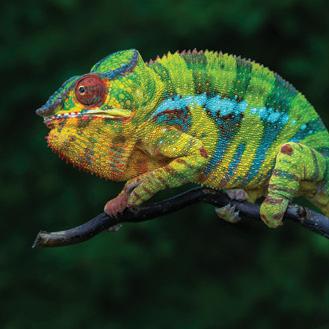


Highly safe and effective disinfectants and treatment products for optimal hygiene and infection control. F10 has the product for your health and hygiene needs. f10products.co.uk





















MAY 2023

ALL EYES ON ME
The keeping and breeding of Moroccan eyed lizards in captivity.
 By Tarron Boon
By Tarron Boon
The Moroccan eyed lizard (Timon tangitanus) is a medium-sized member of the “wall” or “true” lizards. They inhabit a wide range across most of Morocco and northern Algeria, with the possibility of a population in north-western Sahara, though recent surveys have been unable to quantify this. With such a broad range, T. tangitanus are quite adaptable to differing habitats. Their main habitat choices range from Mediterranean scrubland, open woodland and forest to mid-elevation mountain ranges, preferring areas with open basking space near to rocky outcrops or tree hollows in which to escape to. These are an incredibly easy species to care for in captivity due to their adaptable and docile nature. They are highly visible, full of personality and have interesting behaviours that leave the keeper entertained all day long.
Natural history
Sexual dimorphism is pronounced within this species as females attain a slimmer head and body shape and more muted colouration. Females will range from a dull brown to an olive-green colour, with some blueish rings, or ocelli. “Ocelli” refers to the eye-shaped spots or patterns on the body for which the “eyed” lizard gets its name. Males, on the other hand, have a thicker set skull, wider body, and a greater range of colourations. Male colours will vary from a light green to deeper greens and some blues, with a greater number of ocelli.
Moroccan eyed lizards are omnivorous, feeding on invertebrates, such as Coleopterans (beetles) and
Lepidopterans (butterflies and moths), as well as plant material, such as flowers, leaves, and berries. This is an excellent reflection of their broad habitat use and exposure to harsh seasonal fluctuations in the wild.
The International Union for Conservation of Nature (IUCN) places T. tangitanus in the ‘Least Concern’ category due to its wide distribution and presumed large population size, with minimal population decline. The main threats to T. tangitanus are habitat destruction for wood extraction and traditional medicine use. Both threats are considered localised and not a significant threat.
24 MAY 2023 All Eyes On Me
Captive Care
As a minimum, a pair should be kept in a 4 x 2 x 2ft (120 x 60 x 60cm) enclosure, but they will use all available space offered. Building an enclosure as large as possible should be a priority. For indoor keeping, wooden enclosures are best as they will retain the heat, but provided space is accommodated, many materials can be used.
When kept indoors year-round, the heating and lighting setup is vital. T. tangitanus are a Ferguson Zone 3 species, meaning they are an “open or partial sun basker” requiring a UVI of around 3, with a degradation down to 0 in covered shade. Heat should be provided by a high quality,

white light emitting Incandescent or Halogen flood bulb, with the basking zone large enough to cover the entire body of the animal. For some, this may require more than a single bulb. Of course, this heating should also be controlled by a quality thermostat. Basking temperatures should reach around 32°C to 35°C. Keepers should be encouraged to watch their animal's behaviour to help to determine their own preferred basking temperature. Additional lighting, in the form of 6500k LED’s, can also be provided. These will be placed more centrally in the enclosure and provide an almost daylight colour of lighting, improving the visual aspects for both keeper and inhabitant. They are also of benefit to
any live plants in the enclosure.
Substrate and décor should be as natural as possible and allow the animals to express natural behaviours, including digging, climbing, wedging into rock cavities and if possible, live plants can be added for more sight, smell, and taste stimuli. A basic soil mix is a good choice for most enclosures. I choose my own blend of a clay heavy soil, mixed with some coconut coir, loose sand, and pebbles/rocks, to give a firm base that could hold tunnels. It remained dry on top but retained moisture underneath to provide humid tunnels for hiding in, and at one point, it incubated eggs for a few weeks before I found them.
25 MAY 2023 All Eyes On Me
Baby Timon tangitanus with food ©Tarron Boon
My setups
For my own animals, I have tried various setups, depending on availability and space during my time with them. The one shown in this article started life as two separate 4 x 2 x 2ft enclosures. I cut a hole in the adjoining wall, added some plastic tubing, and covered with rocks, which allowed me to give them a full 8x2x2ft (240x60x60cm) enclosure, but ensured I could separate my male and female, should there be any issues, simply by placing some additional rocks in the way.
Each side of the enclosure was outfitted with its own heating and lighting system, utilising 100w Halogen floods around 30cm from the basking zone. This provided a wide basking area to cover the lizards entirely. UVB was provided by a 12% T5 UVB lamp at each basking zone. Each side also had a 22w Arcadia Jungle Dawn LED Bar for overall lighting and plant growth. By supplying two separate basking areas, I was able to minimise competition for heat and UVB, reducing the risk of fights in the enclosure. It also meant that, if I did have to split the two up, there was already heating and UVB in both enclosures.
I utilised rocks across the entirety of the enclosure(s) to provide plenty of hiding spots, and various temperatures around the basking zones. All rocky areas were supported by rocks and bricks that rested on the base of
the enclosure to prevent collapses that could endanger my animals. Around the rocks, I placed a range of branches for climbing on, and planted a few Carex spp. grasses and other succulents, such as Echeveria, Crassula and Sansevieria. To keep correct humidity levels in the enclosure, plants should be watered directly at the base.

In a preferable situation, I would like to keep T. tangitanus in a large outdoor enclosure. Not only would this allow a larger space for them to live, but being outdoors, under natural sunlight, with seasonal variations and the like, is a much better life for them. I do not personally do this as my living situation does not yet allow it, but I have plans in time to create an outdoor enclosure.
This would consist of digging up a large square of land, around 6 to 7ft (180 to 210cm) deep. Lining the entire base with a breeze block wall, to around 3ft (90cm) above ground level, placing approximately 1ft (30cm) of hardcore at the base (to allow for drainage) and then refilling with soil. Above the ground, I would use excess soil to create mounds, along with rocks and plants to create a living space. A greenhouse will be placed inside the wall, to create a basking area above ambient temperatures, but with access in and out at all times.
Whilst filling in the hole it is possible to put in hibernation pods, wooden
boxes with insulation around, and premade tunnels down so the animals can manage their own hibernation. However, some people do prefer to hibernate their animals themselves, especially those in more northern latitudes, where winters can be very wet. To prevent predator access, the entire area will have a frame built around it, above the wall, with a fine screen mesh to prevent mice and rats getting in.
Hibernation
Hibernation is an important part of the lifecycle of the Moroccan eyed lizard In the wild, hibernation is an evolved function in response to food scarcity and lower temperatures. As they have evolved to function in this way over hundreds of thousands of years, it is only right that we offer the same choice in captivity.
Hibernated animals tend to live longer, have increased fertility and a greater energy in the spring. If an animal is not hibernated over winter, you can find them become more sluggish and any mating is likely to result in fewer fertile eggs, if any. From my own experience, I have found that in the years they are hibernated, the male comes out ready to mate, but can become excessively aggressive toward the female, leading to me splitting them up for the rest of year. Whereas, when not hibernated, the male is a lot less aggressive, but also has less interest in mating.
26 MAY 2023 All Eyes On Me
As hibernation is an important aspect of care, any keeper of T. tangitanus indoors, should be willing to have spare enclosures ready for the male to be separated out. I tend to start the hibernation process in October, taking cues from the animals as temperature and air pressure changes in the autumn time. At this point, I will do a health check on each animal, ensuring they are at a suitable weight, well hydrated and otherwise healthy. They should also be given a final feed and allowed some time to digest this and pass waste. If all is well, I will begin lowering the temperature of the enclosure over the course of a few weeks.
This starts by dimming the heat bulb down until it is consistently off. After this, I will turn off the LED Lighting, as it can generate a lot of heat and affect the temperatures. Leaving the UVB lights on at this point allows them to notice a reduced light, without putting them into complete darkness. It also ensures they can synthesise D3 a little bit longer, though this is reduced due to a lack of basking heat.
After a bit of time of just UVB, these lights will go off, so that the only light available is whatever comes through the reptile room window. At this point, the T. tangitanus slow right down, and tend to stick in one spot, not moving much. It is important throughout this process to ensure they always have fresh water. Even when in hibernation, they will still drink.
Next, I place them in a tub that has enough soil for them to bury into if they wish. I use a ventilated 18L Really Useful Box (RUB) with a standard, fertiliser-free topsoil, per animal. Once in these tubs, I move them into our utility room, which is cooler than the rest of the house, but not quite as cold as putting them outside. They will remain here for another few days, before going to their final hibernation spot.
The final job is to place the RUBs into a larger RUB or other box, which is filled with packing peanuts or another form
of insulation. This allows them to reach temperatures much lower than in the home, but the insulation protects from large temperature variances through the day. Here they will stay until the weather begins to warm in the spring, around March, when I reverse the whole process and get them warmed up.
Throughout the process and during hibernation, it is a good idea to check on the animals every 2 to 3 weeks. Check weight, appearance, hydration and ensure the substrate in the tub hasn’t dried out, damped off or moulded. If the keeper is concerned at all, they should slowly warm them up and get them back into their enclosures. In time, they will eat and drink and hopefully be fine. Of course, ensure you can see a veterinary professional if feel it necessary. This process can also be used to control the hibernation of T. tangitanus kept outdoors. Of course, the management of heating and lighting is much more natural, due to the normal seasonal variation.
Breeding
Breeding of T. tangitanus is relatively simple. As previously mentioned, best results are made when the adults have been properly hibernated.

In the spring, the male will start showing interest in any females around. They will follow them around the enclosure, tasting their scent, nudging their back legs and generally focus on nothing other than their potential mate. If the female is willing, she will respond to these signals with her own, such as lifting her tail to ‘present’ herself and staying around the male. At some point the male will bite on to the female’s neck and position himself to mate. This can look quite rough and may even tear the female’s skin, but it shouldn’t cause too much damage and will heal relatively quickly.
Once the deed is done, the male may continue to show

27 MAY 2023
Female Timon tangitanus
Male Timon tangitanus
interest in the female, especially if they are a single male/ female pair. At this point, it may be necessary to remove the male. If the female doesn’t show any interest in mating, either before or after an initial mating, the male may get a little more aggressive and force her to mate. This could lead to fighting among the pair, so removal of the male will be needed again.
Upon a successful mating, the female will soon show signs of being gravid. These can include eating less, as the space in her body is taken up by eggs, a growing abdomen and increase in digging behaviour, as she finds somewhere to deposit the eggs. Internal incubation lasts around 1 to 2 months, after which she will deposit anywhere from 8 to 20 or more eggs in a burrow, which is then covered up. How you incubate the eggs will be a matter of personal preference. Most people will pull the eggs and incubate themselves.
Incubation temperatures vary from person to person, with some opt for 27°C to 30°C, whilst others suggest lower temps are much more natural, around 25°C. I personally prefer to incubate them in a rub filled with soil, eggs buried, and the tub placed in the warm reptile room with

no insulation, at room temperature (approximately 18°C to 22°C in this room). Eggs can take up to 12 weeks or so to incubate. Warmer temperatures will cause hatching earlier, with smaller babies. Cooler temps take longer to hatch, but the babies come out larger and generally stronger.
Babies can be kept the same as the adults, although it is best for the first few weeks, to keep the enclosure sterile and substrate free. Use paper towel or similar, so you can monitor the babies more easily, and reduce the risk of impaction whilst they are young. Once they have grown a little and are feeding safely and accurately the babies can be moved onto a soil-based substrate with appropriate décor.
Summary
Overall, Timon tangitanus are a fascinating and fun species to keep in captivity. They do incredibly well if kept outdoors, where appropriate, but can also be a great species to keep indoors where necessary. These make a wonderful alternative to more common species of a similar size, such as bearded dragons, as they are relatively easy to keep, even if they are a little less handleable.
28 MAY 2023
Disease in your captive tadpoles?
Have you seen any disease, noticed unusual symptoms, or had unexpected deaths in your tadpoles?
Are your tadpoles bloated – maybe with pink or yellow discolouration around the abdomen?
the Tadpole Doctor

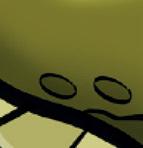


Disease in your captive tadpoles?

Have you seen any disease, noticed unusual symptoms, or had unexpected deaths in your tadpoles?



Are your tadpoles bloated – maybe with pink or yellow discolouration around the abdomen?
Have you observed any change in their behaviour, such as: sudden and erratic movements, swimming in circles, loss of equilibrium, sluggishness, floating at the surface or death?
Have you observed any change in their behaviour, such as: sudden and erratic movements, swimming in circles, loss of equilibrium, sluggishness, floating at the surface or death?

Researchers at the University of Oxford need your help. They are trying to track the spread of a newly identified disease of tadpoles. If you suspect that your tadpoles are showing signs of the disease symptoms mentioned above, please make contact at http://tadpole-doctor.co.uk.

Researchers at the University of Oxford need your help. They are trying to track the spread of a newly identified disease of tadpoles.

If you suspect that your tadpoles are showing signs of the disease symptoms mentioned above, please make contact at http://tadpole-doctor.co.uk

http://tadpole-doctor.co.uk

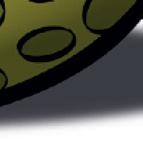











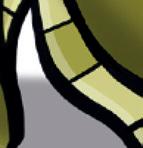








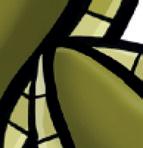
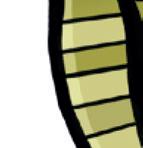
















































MAY 2023
The Royal Society and the University of Oxford bear no responsibility for this project.
tadpole-doctor.co.uk The Royal Society and the University of Oxford bear no responsibility for this project.
BEHIND THE LENS
Photographing amphibians and reptiles in the wild.
 By César L. Barrio-Amorós
Cesar photographing snake ©César Barrio-Amorós
By César L. Barrio-Amorós
Cesar photographing snake ©César Barrio-Amorós

César Barrio-Amorós is a professional herpetologist, photographer and Scientific Director of CR Wild. Currently based in Costa Rica, his photography has helped illustrate his numerous contributions to herpetological study.
In this article, César explains his evolution as a photographer, with a focus on herping photography. He will cover the story of his hobby plus the photography gear that he uses, as well as his opinion about it, all illustrated with photos taken using different equipment.
The early days
Since I was very young, I demonstrated a huge passion for nature. One of my first birthday gifts was a Polaroid camera, with which I went all around the forest of my garden in the surroundings of Barcelona, taking very expensive and very bad pictures of spiders, wall lizards and pigeons. Once my passion for photography was well established and understood by my family, my father gave me another wonderful present, his old Nikon FM (as he bought himself an FM2). That first real camera with just a Nikkormat 50 mm lens was a totally new discovery for me. I quickly got three approximation rings and started to photograph all the microfauna I saw. Of course, those photos were mostly out of focus, with very bad illumination, etc, but it serves me to love and get involved
further in wildlife photography. Then, I got a 300 mm lens for my FM and started to pursue all kinds of birds. Something as common, but colourful, as a European kingfisher was like a trophy to me.
The Analog Era
In the analog era, of course, slides were the only semi or professional way to shoot. I normally used Fuji Velvia 50 ASA. Development was not very expensive, but took a few days, and I remember all the excitement of the wait, especially after a trip in which maybe I shot 10 or 15 rolls (this means 360 to 540 slides). Of course, many things could go wrong, from a bad roll to malfunction of the
32 MAY 2023 Behind The Lens
camera or just bad judgment while shooting. In some cases, entire rolls were burned or very dark, just unnoticed until too late. We had no way to see the result in advance, so many times, I shot blindly! I took several photography courses to understand the methods of macro and nature photography, but even then, all accessories were too lame (compared to those nowadays) and not many people used diffusers for macro photography in those days. The best pictures of those days could be compared with the worst pictures of a current photo shoot. I moved to Venezuela in 1995, carrying my FM, with a new 70-200 macro zoom lens and a new flash with a small diffuser, and my time for macro shots of Neotropical herps began
First Digital cameras
In 1998 I was hired by a Foundation (FUDECI) to make a census of the giant river turtles (Podocnemis expansa) in the Upper Orinoco River. For that, they provided me with industrial Kodak rolls of slides that I should develop myself. I must say, that was the worst decision ever, as I failed miserably doing so. My photos of that magic time are gone (many also attacked by fungi). At the end of the project, FUDECI bought and sent me a new strange and ugly camera, a Sony Mavica, the first commercial digital camera that used a floppy disk and took seconds to process each photo! However, to see the result immediately and the possibility of deleting any bad photo was an incredible
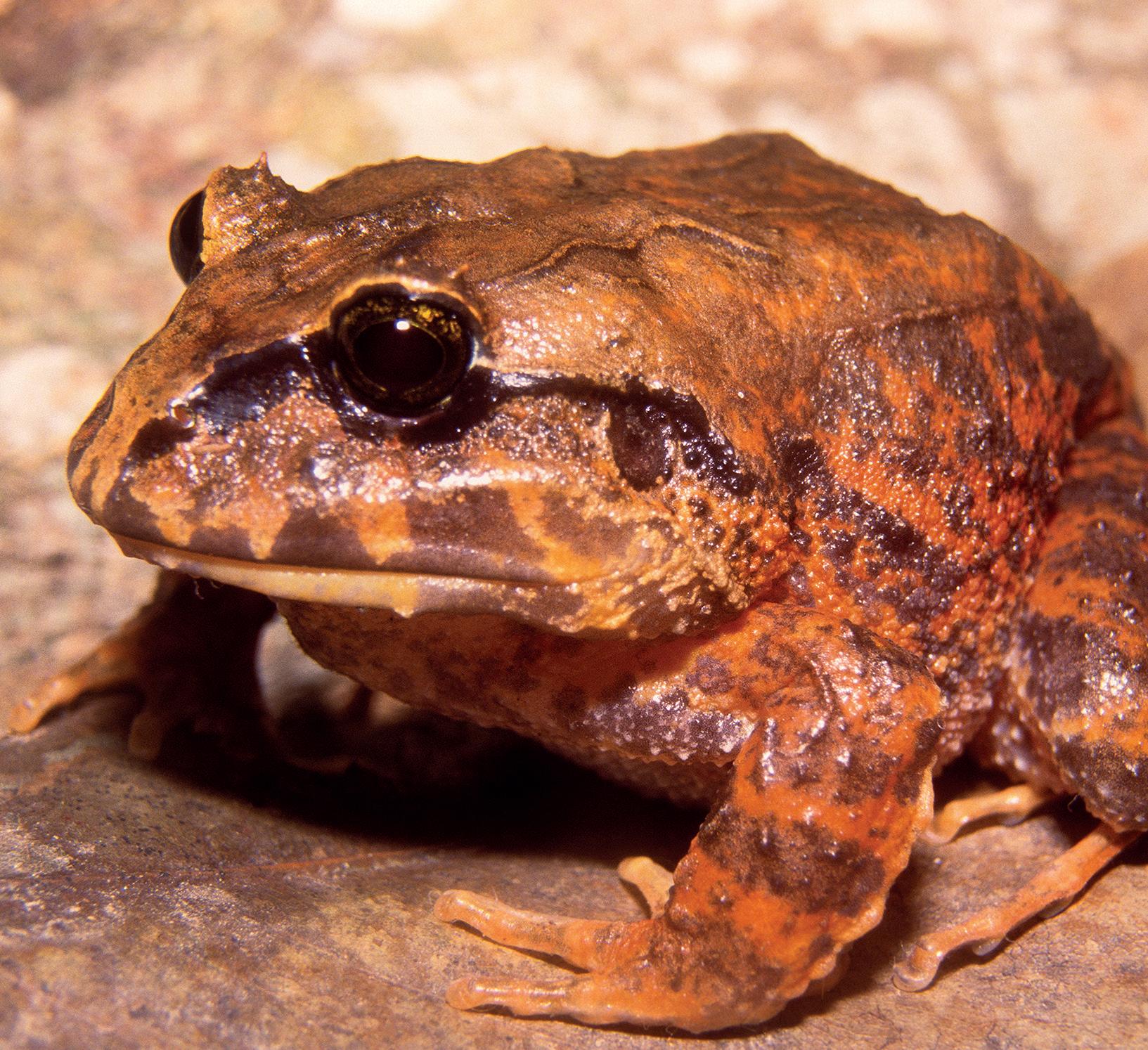
33 MAY 2023
Behind The Lens
Strabomantis biporcatus taken with an FM and 70-200mm macro zoom lens ©César Barrio-Amorós
novelty! Those pictures were done at 34 dpi with very low quality. Then, Hinrich Kaiser, a herpetologist supporting my research in Venezuela, sent me a Sony DSC P1 Cybershot, which was a huge improvement from the floppy disk camera, as it was very small, portable, and did not use floppy disks, but a memory stick. I was in love with that and used that camera for at least 4 years, until I saw the first bridge cameras during a trip to Peru. There, my photos were so limited compared to those taken by colleagues, that I firmly decided to go after one of those. Soon after, I saw a German client coming on one of my tours with a marvellous and beautiful Sony F717 and I was instantly in love! I needed it!
But, when I had the opportunity in 2005 to buy a new camera, the new and spectacular Sony F828 appeared in my horizon and I was, once more, charmed by it. I bought it and I must admit, that was the best camera (or at least, the one I remember with the most affection). The idea to have a Carl Zeiss lens with a 7x optic zoom, 28-200 mm, with the possibility of shooting a very short range like a wide angle was totally new for me at that time. I went to some expeditions in wild areas of Venezuela during that time carrying only my F828 and my fellow companions, pro photographers, like my mentor Charles Brewer-Carías, using Canon, Mark Moffet from National Geographic, using Pentax and Alan Highton, using Olympus, were all surprised
by the features of that camera, also because it could shoot videos of high quality for that time. Some of my images were published in books and articles of the time.
In an expedition in 2007 to the Cuyuni River between Venezuela and Guyana, my first F828 failed, and I used a borrowed Sony HX9 bridge camera. A whole new world was discovered in the incredible and fast zoom and macro possibilities. I was quite interested in the model and followed the evolution of the Sony series H and HX for a while, but the mermaids of a reflex camera were calling sweetly.

First Sony alpha
In 2008, I decided to get myself a good present. I was eager to move to a reflex camera and I was already a Sony fan, so I investigated Sony models and ended with an Alpha 350 - my first digital reflex camera. Of course, it was necessary to get some good lenses and the Sony 100mm macro lens was the choice. I also had a Sigma zoom, and ended with a Sigma 150-500 mm. That equipment was the determinant for my last expeditions in Venezuela, where I could make my first real macro shots since the analog era. Unfortunately, just a few examples remain, as my whole equipment was stolen in 2010 and I lost a great amount of material.
34 MAY 2023
Gonatodes annularis macho taken with the Sony F828 ©César Barrio-Amorós
 Boa constrictor taken with the Sony Alpha 350 with Sigma 11-18 mm lens ©César Barrio-Amorós
Boa constrictor taken with the Sony Alpha 350 with Sigma 11-18 mm lens ©César Barrio-Amorós
Bridge cameras again
As it was very difficult to quickly re-gather a whole set of camera body (I was in love with the Alpha 700) and lenses, I decided for the time on, until I could save enough for another Sony reflex equipment, to follow up with the much cheaper and still versatile Sony H7 (which I destroyed quickly in rough conditions), a HX100 that was my perfect companion in Argentina and Chile and a little after a HX300, with which I went to Colombia (30-33). I loved the possibility of making quite good macros and also decent wide angles. Those Carl Zeiss lenses present on these cameras, as well as on the HX400v, permitted me to approach a very small subject (for example a dendrobatid frog of 2 cm) and make great compositions.
The era of Sony RX10
When in the field with some of my friends from Tropical Herping, Lucas Bustamante and Alejandro Arteaga who use APSC cameras like Canon 7D (the most pro camera used by macro photographers, along with Nikon D200, at the time), they always recommended me to make the change again to a reflex. I was hesitant for many reasons… I was comfortable using those bridge cameras that were so light and versatile that I needed not to change lenses and were easily transported even in the pocket of my cargo pants. In my expedition to Argentina (Barrio-Amorós 2013) I was delighted to have just that Sony HX100 camera as my whole photographic equipment and the results were quite satisfying.

Since I shared wonderful times there with some photographers, I saw them carrying heavy gear and I was not convinced at all to do so again. I was more
than reluctant to gather again a whole heavy piece of equipment with one or two bodies and several lenses, weighing around 10-12 kilos on my already broken back (I have had a discal hernia since 1992). But sharing good amounts of time with pro photographers in Argentina, Ecuador, Mexico and Costa Rica, helped me decide to get a new reflex.
On the way to get another set of equipment, the amazing Sony RX10 appeared on my horizon in 2014, and I went for it. And that was the best decision I ever made! To have a bridge camera with a sensor of 1” (13.2 x 8.8mm), 20 megapixels, and a focal range of 24–200 mm in a Carl Zeiss lens was a dream for me!! I also started to try video and the video settings were more than enough, filming at 4K with a powerful stabilization. With that weapon, I was able to take similar photos in wide angle (24 mm) including better macros than with my beloved Sony HX400v, winning in image quality but losing in zoom range. This RX10 was my loyal companion during my first expedition to Mexico. However, the only limitation I noticed was the short range of a 200 mm zoom.
Surprisingly soon, in 2016, the RX10 M3 was released with a 24-600 mm Carl Zeiss lens! A real monster! That was then my preferred camera to this day! I had 3 of them, as the first I destroyed after 2 very good years of roughness, the second was with me 3 more years until it was stolen, and immediately when I could, I bought a third one, as the differences with the RX10M4 are minimal and the price of the last is quite a bit higher, I preferred to stay loyal to my Mark III. This RX10M3 is for me the best camera ever. It is easy to handle, to shoot, you can see the taken pictures through the screen or the viewer with high quality, the lens
36 MAY 2023 Behind The Lens
Pristidactylus from Peninsula Valdes, Argentina, with a Sony HX400v ©César Barrio-Amorós
is admirably stable making it easy to film at hand. The 600mm optic zoom (1200 mm digital) is just outstanding in image quality and reaches mostly all targets you will need. Many other expeditions (to Ecuador, Costa Rica, Guatemala, Mexico, etc) followed that wonderful time. Are there some cons? See below, but just a suggestion, if Sony adapts an APSC sensor and a lens which could be 20-1000 mm, then they would make the most perfect camera ever!!!! Another important improvement any bridge camera or


lens should have is some LEDs directly on the lens to facilitate focusing of the target when it is very close.
Nikon D750 vs Sony RX10 III
When my second RX10 M3 was stolen in July 2021, I obviously needed to have that camera back. I was too used to it, too comfortable, it was like a great relationship that I denied to finish! So, I had some savings and immediately I
bought it again. However, I must admit I wanted something else.
My Sony was able to make good macro pictures of medium sized animals, but not of very small ones or with great detail. For that, I should use a proper macro lens. And also, I was looking for a long time at those pictures of a small target, like a dendrobatid frog of 2 cm showing all the background and I really wanted to do that. Actually, the RX10M3 makes outstanding wide-angle pictures as it is able to focus as close to the lens

37 MAY 2023 Behind The Lens
Abronia graminea taken with the Sony RX10M3 ©César Barrio-Amorós
Phyllomedusa sauvagii taken with a Sony HX series ©César Barrio-Amorós * Images cropped for magazine formatting
Basiliscus basiliscus taken with the Sony RX10M3 ©César Barrio-Amorós
as 2 cm and I was very satisfied with that kind of picture. The difference was that other photographers used dedicated 15mm macro wide-angle lenses, like the Laowa 15 mm. Then I started to investigate which camera I would need to shoot those pictures, and to avoid the conversion factor of APSC needed to be a full frame.
With a lot of effort and help from some friends, especially a Nikonista from Barcelona to whom I explained all my necessities, he sold me his almost new Nikon D750 body, with less than 100 shots, quite affordable. Then I decided to go for the Laowa 15 mm and searched for a macro until I saw a used Tamron 90 mm without stabilization. That is my current equipment and I started to shoot it in Ecuador. I just brought the Nikon and lenses, leaving the Sony, which

I really regret. Why? The Sony is perfect for video… and several kinds of pictures I can´t do with those two lenses. Some more sessions with the Nikon plus macro Tamron 90 mm and the Laowa 15 mm leave me some of my favorite photos ever. Currently, I carry with me the Nikon and the Sony together, plus a Go Pro Hero 7, a DJI Mavic Mini 2 and a Samsung Galaxy S10+ cell phone, 5 cameras in total!
Conclusively, my selection of cameras are equip me for any possibility. I use the Nikon+Tamron 90 mm for macro, Nikon+Laowa 15 mm for wide angles, Sony RX10M3 for videos and long shots (zoom) and macros with 600 mm, the GoPro for adventures in and out of water and the Mavic Mini2 for very good quality aerial video (4k, 30 fps). I also use my cell phone for quick videos with decent quality.
38 MAY 2023
Micrurus alleni taken with a Nikon D750 and Laowa 15mm macro wide angle lens ©César Barrio-Amorós
KEEPER BASICS: SUMMER POND MAINTENANCE
 By Dr Dave Pool
By Dr Dave Pool
Throughout the summer your pond should be at its best with healthy plants and fish and clear water. However, there are a few summer problems which can occur which are related to the increased activity of both plants and fish. Luckily, these are relatively easy to control or better still, prevent.
Oxygen
As summer welcomes higher water temperatures, the major water quality problem is due to a lack of dissolved oxygen. This can result in the fish gasping at the water surface, showing rapid gill movements and congregating around filter and waterfall outflows. Such problems are usually confined to ponds in which there is little or no water movement and generally occur at night.
At higher temperatures, fish need more oxygen. Unfortunately, as the temperature rises, the water is not able to hold as much oxygen as it can when it is cold. Therefore, if there is no water movement to allow the oxygen to be absorbed across the surface, it can quickly be used up. Such problems do not usually occur during
the day because the plants and algae in the pond will be photosynthesizing. That is taking in carbon dioxide and water and forming carbohydrates and oxygen. This oxygen release will ensure that there is sufficient oxygen in all but the most overcrowded pond throughout the day.
However, after dark, the plants and algae stop producing oxygen and instead use it to respire. This, in addition to the continuing oxygen consumption by the fish, filter bacteria and other pond inhabitants, can quickly lead to oxygen depletion. Keepers can avoid this by ensuring there is plenty of water movement, which will mix the surface water (that has higher concentrations of oxygen) with the lowoxygen bottom layers. Water movement can be achieved
40 MAY 2023 Keeper Basics: Summer Pond Maintenance
using a waterfall, fountain or pond air pump. Excess debris should be removed as it will use up a lot of oxygen. Also, take great care following algae treatment as any dead or dying algae cells will consume oxygen at a rapid rate.

Pollutants
Organic waste such as uneaten food, fish waste and leaves are broken down in a process known as the nitrogen cycle. This decomposition results in the formation of ammonia, nitrite and finally, nitrate. Ammonia is very poisonous to fish and other wildlife. In water, ammonia can be present as either toxic ammonia or non-toxic ammonium, with the relative amounts of each being determined by several factors of which the most important are water temperature
and pH. Below a pH of 8.0 most of the ammonia is present in the non-toxic ammonium form. Above 8.0 the toxic form becomes increasingly more prevalent. Regarding temperature, there is approximately 5 times as much toxic ammonia at 20°C as there is at 5°C. Whilst this is unlikely to cause a problem in a pond with a pH of 7.5 or less, it could do so in a poorly filtered or overcrowded pond with a pH of 8.0 or above.
Ammonia is an irritant, which will damage the sensitive gills of the fish as well as affecting the skin. Symptoms of ammonia poisoning include gasping at the water surface, gathering around areas of water flow and sulking on the bottom or surface of the pond – all resulting from the gill damage, which prevents the fish getting enough oxygen.
41 MAY 2023
Keeper Basics: Summer Pond Maintenance
You may also notice the fish rubbing against underwater objects as they try to get rid of the irritation. Most fish will also produce a layer of protective mucus over the body, causing them to feel very slimy and to appear paler than normal. In severe cases, the skin can become blood shot.
Raised levels of nitrite are a problem in all water temperatures and pH values. However, nitrite can be a particular problem at higher temperatures. Nitrite affects the fish by binding with the hemoglobin in the blood and preventing it from carrying as much oxygen as normal. If the water has low levels of oxygen due to the raised temperature and other factors already discussed, the effects of nitrite can be greatly exaggerated.
Careful monitoring of the water quality with a test kit will enable rapid detection of raised levels of ammonia or nitrite. Watching your fish and looking for signs of them behaving unusually is also a very good guide that something is wrong. Levels of ammonia or nitrite that are significantly above 0mg per litre of water would indicate a poorly functioning or too small filter, overcrowding, over feeding, the recent introduction of fish or having recently cleaned out the filter. Such problems can be overcome quickly by a large (25 – 50%) partial water change to dilute the polluted water. At the same time, remove any excess debris that has accumulated at the bottom of the pond and cut down on feeding until the fish are looking healthy again.
Holidays
Many pond owners are concerned about leaving their pond whilst they are away on holiday. In most cases, these worries are completely unfounded, and the pond will come to no harm at all whilst they are away. In a planted pond the fish will find plenty of algae and insect larvae on which they can feed and in many cases the pond will look a lot cleaner and clearer when you return. Even in a fish only pond, the fish can find some food and will have sufficient stored energy reserves to thrive for 1 – 2 weeks without additional feeding.

It is advisable not to add any new fish in the 2 – 3 weeks immediately before you go away on holiday. The last thing you want to do is to introduce new diseases into the pond just before you go away. Cleaning the filter and removing any excess debris about a week before you go away is a good idea and will ensure that the pond is in perfect condition. Don’t add any extra food to the pond in the week before you go as any that is uneaten will pollute the water.
As a precaution, it is wise to ask a friend or neighbor to have a look at the pond occasionally to check that there are no severe problems (e.g. dead fish, pump not working). You can ask this person to feed the fish, but unless they are a fishkeeper the amount to give at each feed should be carefully measured into an envelope. Most non-fishkeepers will be tempted to add too much food to the pond with the resultant water pollution issues.
42 MAY 2023 Keeper Basics: Summer Pond Maintenance
Evaporation
The loss of pond water in the summer can be considerable, particularly if you have a fountain or waterfall. In very warm conditions the loss of water can be so great that it is confused with a leaking pond. Evaporation losses should be replaced on a regular basis with tap water that has been treated to remove harmful chlorine.

Fountains
Many garden ponds have ornamental fountains that are run continually. In windy weather, the water from the fountain can be blown out of the pond resulting in water loss, and/or the resultant water washing debris back into the pond. It is therefore advisable to switch of the fountain during periods of windy weather or turn them down so water is not lost. If the fountain is part of the pump that provides water to the pond you shouldn’t turn off the pump – just turn down the fountain.
Fountains can have an adverse effect on water lilies. Water lilies don’t like water falling onto their leaves or flowers. If the water on the leaves evaporates in strong sunlight, it can burn the leaves resulting in brown areas that will decompose. Water falling in the flowers will usually result in the life span
of that flower being greatly reduced, sometimes to just one day. Positioning water lilies away from fountains and other water movement is advisable (and watch out for the impact of the water blowing in strong winds).
Spawning
In the late spring and early summer, it is likely that the fish in a healthy pond will spawn. This does not cause any problems in most ponds. Sometimes the parent fish can damage themselves, with torn fins and grazes on their body. They will usually heal within a few days, but if not, use of a general external parasite treatment will help. After a successful spawning you will notice the parent fish swimming around and eating a lot of the eggs. If the pond is planted, there will be sufficient eggs that remain to ensure that you have fry in the pond. Watch out for water quality problems in the few days after spawning. Sometimes the production of large amounts of eggs can lead to slightly raised levels of ammonia ad nitrite.
Pond fish fry are initially an olive brown colour and can be difficult to see amongst the plants and algae. As they grow the colours may start to develop, with the brighter colours of their parents starting to develop after around 4 weeks.
43 MAY 2023
Identifying what fish fry you have can be a challenge, as they all look remarkably similar. Once the fish are about 2 – 3 cm in length you can get an indication by catching some of the fry and putting them in a clear polythene bag half filled with water – this allows you to look at the fish from the side. Look at the dorsal fin (on their back) and the presence or absence of barbels around the mouth.
• A long dorsal fin and no barbels around their mouth – goldfish
• A long dorsal fin and barbels around their mouth – koi
• A short dorsal fin and no barbels around their mouth – orfe
• A short, rounded dorsal fin and barbels around the mouth - tench
Algae growth and green water
By far the biggest maintenance task and potential problem in the summer is the growth of unsightly algae in the pond. This takes the form of green water, which is millions of algae cells suspended in the pond water, or blanket weed, which is strands of filamentous algae which grow on plants and the pond side.

Algae grow in a pond because there is plenty of sunlight and nutrients in the water. In a well planted and lightly stocked pond there will be a balance throughout the summer where the nutrients produced by the fish are being absorbed by the plants, leaving no excess for the algae to grow on. Unfortunately, this balance is not there throughout the year or in all ponds.
Green water algae may be controlled using a UV clarifier. These units produce UV light which will kill the algae cells.
Alternatively, you can use an algaecide, floculant or straw extract that will control the algae growth. These options can work very effectively, but you need to also get rid of the conditions that are encouraging the algae to grow so quickly if the problem is not to return. A UV clarifier, for example will effectively kill green water algae cells, but the light and nutrients remain and will often encourage the growth of blanket week.
Adding more fast-growing plants (oxygenating plants) is a good way to reduce the nutrients in the water. Regularly cut them back to ensure that they are growing actively. Removing excess debris from the pond bottom will also help to remove a source of nutrients. One of the biggest sources of nutrients in the pond is from the food that you feed to the fish. Using a good quality food will ensure that most of it is digested by the fish and doesn’t pass through them to encourage the algae growth. Even with a good quality food, make sure that you don’t overfeed. 1 – 2 times a day on as much as they will eat in 5 minutes is sufficient. Providing shade will also help to minimize green water algae. Lilies can be very effective at shading large parts of the pond. Tall marginal vegetation can also help, particularly if planted on the south side of the pond where it will provide the most shade.
The filamentous algae that we call “blanket weed” can be controlled using commercially available algaecides or straw extracts. It is advisable to remove as much of the algae as possible before treating, as this will avoid any dead material decomposing and polluting the water. As with green water, preventing the blanket weed from coming back using fast growing pants, minimizing nutrients into the pond and providing shade will help to prevent the problem returning.
44 MAY 2023
FASCINATING FACT
What is a silkworm?

The silkworm is the larvae form of the Asian silk moth, Bombyx mori. It is a soft-bodied caterpillar that feeds almost exclusively on Mulberry. Silkworms have been bred in captivity for over 5,000 years in China and almost as long in other nearby countries such as Korea, Nepal, Japan and India for their ability to create raw silk. The domesticated silk moth is thought to have derived from a Chinese locality of the wild type, Bombyx mandarina but cannot fly like their wild cousins.
Although their rich history within Chinese culture is impressive, today, silkworms are perhaps best known as food. Exotics keepers are often well aware of the benefits of feeding silkworms to their animals, but in some countries, silkworms are readily eaten by people. In India and China, the larvae are roasted and sold as street food. In Japan and Vietnam, silkworms are the main ingredients for several main dishes. In Thailand and Korea they are frequently sold as snacks and in some cases, sold in supermarkets as pre-packaged snacks. Their readiness to breed, quick growth cycles and high nutritional value has even seen some scientists support the idea of cultivating silkworms in space as an astronaut foodstuff.
Part of the reason why farm-raised silkworms are eaten by plenty more humans than animals is that we are aware
of just how nutritious they are. They are lower in fat than any other commercially bred “worm” but contain well over double the mg/kcal of calcium of a mealworm or cricket. They are also 54% protein, making them one of (if not the) most protein-rich feeder insects. Because of this, silkworms can be fed as a staple diet for most insectivorous pets. Although they are more expensive than crickets and locusts, their nutritional value is unparalleled and some keepers choose not to provide additional supplements because of this.
Silkworms are soft-bodied and made up of 76% moisture, making them excellent for desert species like Uromastyx as well as arboreal tropical species like chameleons. They can also be kept and grown to meet the size requirements of the animal. “Micro” silkworms are typically around 0.5cm whilst “XL” silkworms reach upwards of 5cm before they start to pupate. Most commercially available silkworms are size “large” at around 4-5cm. Some suppliers also sell eggs, which can be hatched and raised on mullberry. They do not require water and can be raised in standard-sized live food tubs. Providing any dead grubs are removed to prevent bacteria growth, even the novice reptile keeper can maintain a healthy collection of silkworms to feed to their animals.
Fascinating Fact 45 MAY 2023
REHOME ZONE
Can you help these exotic pets find a new home?

Lucien: Female Common Boa

One of our last remaining animals from 2021, Lucien is a lovely, inquisitive 2-year-old who hasn’t had the best luck. She’s had a few adoptions fall through despite our best efforts. She’s laid-back and would be well-suited to a firsttime boa keeper.

Justin: Berber Skink
Justin the berber skink is a little bit of a mystery – we don’t know his age, and we’re not entirely sure on his sex. What we do know is that he’s a bit skittish, but absolutely stunning (when he’s not buried in the sand).


Rumplesnakeskin: Male Corn Snake
A mellow, 8-year-old lad, Rumplesnakeskin is more than just a funny name, he’s an all-around character with an unusual ‘flat’ spot in the middle of his body (cleared by the vet), and a grey ‘bandit mask’ on his face for extra charm!
Flynn: Male Royal Python
One of our earliest arrivals for this year, Flynn is a stunning, large lad who can be a bit temperamental and uncertain when meeting new people, but quickly relaxes with gentle handling and a little patience.
Remus: Male Common Boa
Remus is a stunning, 7 year old, hypomelanistic boy whose previous owner was heartbroken to give up. He’s a classic nosy, clingy boa who is more than happy to wrap around an arm or leg and just hang out, and is completely tap-trained.
Vamp: Male California Kingsnake
All the way from Scotland, Vamp is a kingsnake person’s kingsnake: inquisitive, clever, and very keen on eating. He may be a little feisty for a first-time owner, but he’s sure to win over diehard kingsnake fans with his good looks and attitude.
46 MAY 2023
Rehome Zone Contact: The National Centre for Reptile Welfare (NCRW) Visit www.ncrw.co.uk or email info@ncrw.org.uk Alternatively, call Chris Newman on 07897 692060


47 MAY 2023 While you're basking in Bank Holiday sunshine... Let them bask in the knowledge that they're covered! We also offer exotic, dog, cat and horse insurance, as part of the Petcover Group. Contact us at exoticdirect.co.uk or call us on 01444 708850. ExoticDirect is a trading name of Brooks Braithwaite (Sussex) Ltd which is registered in England and Wales under number 1416900. Brooks Braithwaite (Sussex) Ltd is authorised and regulated by the Financial Conduct Authority under reference number 304839.
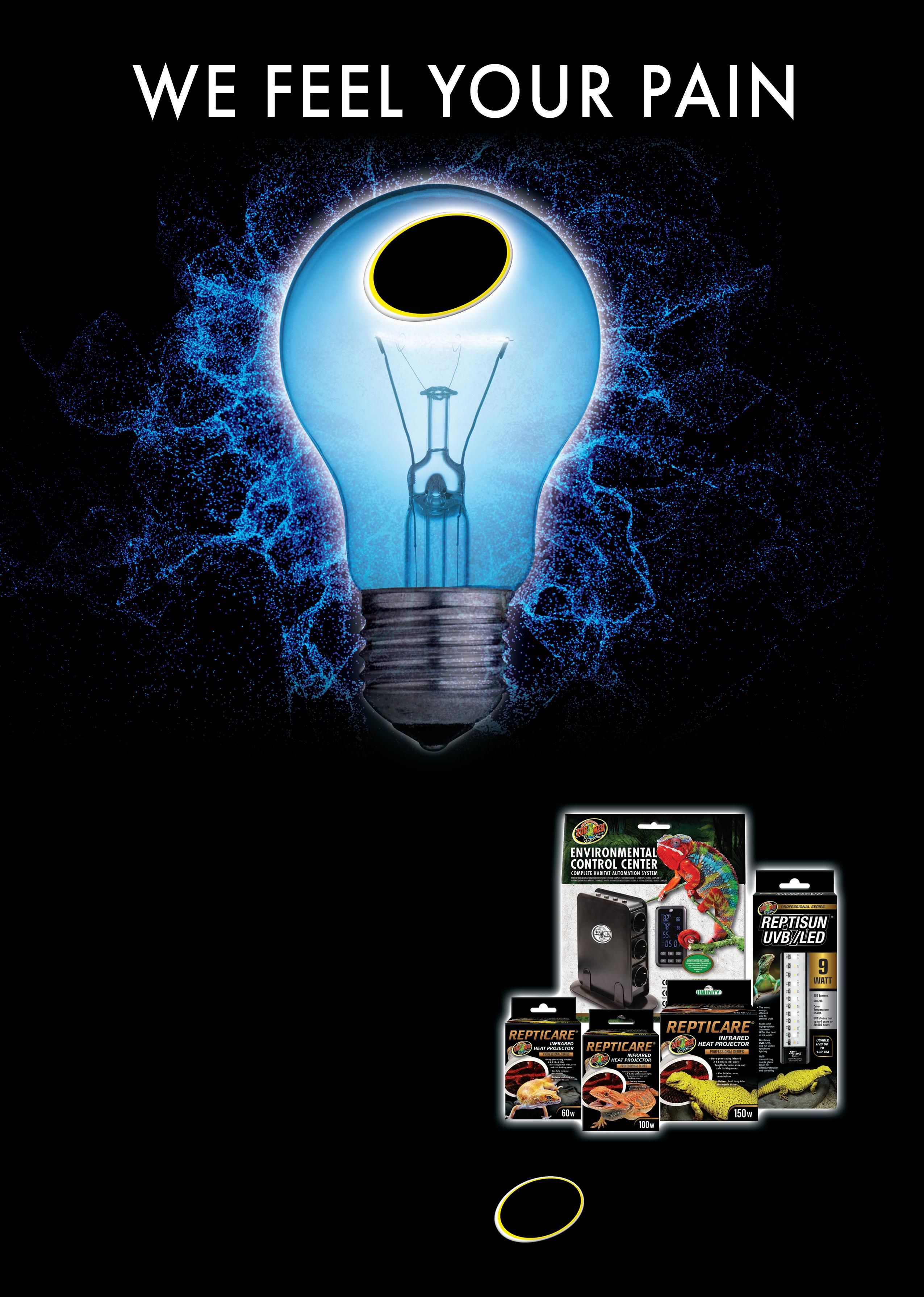
















































































 By Paul Irven
By Paul Irven








 Pilbara rock monitor (V. pilbarensis)
Pilbara rock monitor (V. pilbarensis)
































 By Tarron Boon
By Tarron Boon







































































 By César L. Barrio-Amorós
Cesar photographing snake ©César Barrio-Amorós
By César L. Barrio-Amorós
Cesar photographing snake ©César Barrio-Amorós



 Boa constrictor taken with the Sony Alpha 350 with Sigma 11-18 mm lens ©César Barrio-Amorós
Boa constrictor taken with the Sony Alpha 350 with Sigma 11-18 mm lens ©César Barrio-Amorós





 By Dr Dave Pool
By Dr Dave Pool













